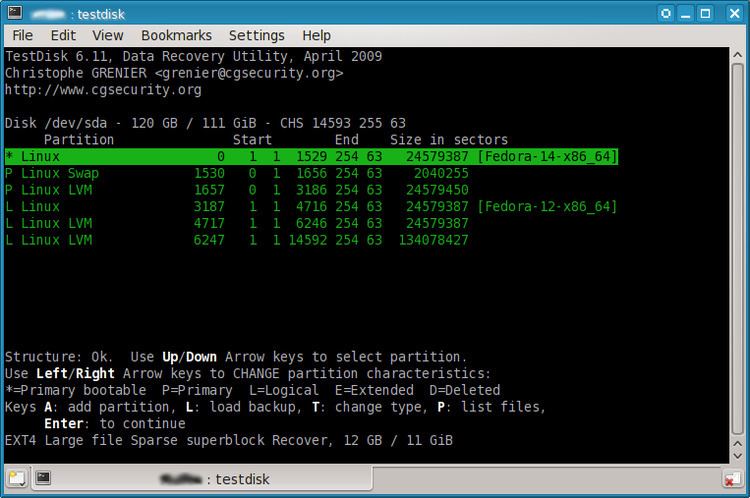Developer(s) Christophe Grenier Written in C | Development status Active Platform Cross-platform | |
 | ||
Stable release 7.0 / April 18, 2015 (2015-04-18) Repository git.cgsecurity.org/cgit/testdisk/ | ||
TestDisk is a free and open-source data recovery utility. It is primarily designed to help recover lost data storage partitions and/or make non-booting disks bootable again when these symptoms are caused by faulty software, certain types of viruses or human error (such as accidentally erasing a partition table). TestDisk can be used to collect detailed information about a corrupted drive, which can then be sent to a technician for further analysis.
Contents
Supported operating systems
TestDisk supports these operating systems:
Supported partition table type
TestDisk recognizes the following disk partitioning:
It also handles non-partitioned media.
Partition recovery
TestDisk queries the BIOS or the operating system in order to find the data storage devices (hard disks, memory cards, …) and their characteristics (LBA size and CHS geometry). TestDisk can
TestDisk does a quick check of the disk's structure and compares it with the partition table for entry errors. Next, it searches for lost partitions of these file systems:
However, it is up to the user to look over the list of possible partitions found by TestDisk and to select those that were being used just before the drive failed to boot or the partition(s) were lost. In some cases, especially after initiating a detailed search for lost partitions, TestDisk may show remnants of partitions that had been deleted and overwritten long ago.
A step-by-step guide explains how to use this software. TestDisk can be used in computer forensics procedure, it supports the EWF file format used by EnCase.
Filesystem repair
TestDisk can deal with some specific logical filesystem corruption:
File recovery
When a file is deleted, the list of disk clusters occupied by the file is erased, marking those sectors available for use by other files created or modified thereafter. If the file wasn't fragmented and the clusters haven't been reused, TestDisk can recover the deleted file:
Popularity
TestDisk and PhotoRec (by the same author) have been downloaded more than 150,000 times in July 2008 from the primary website. In fact these utilities are even more popular as they can be found on various Linux Live CDs:
They are also packaged for numerous Linux distributions:
